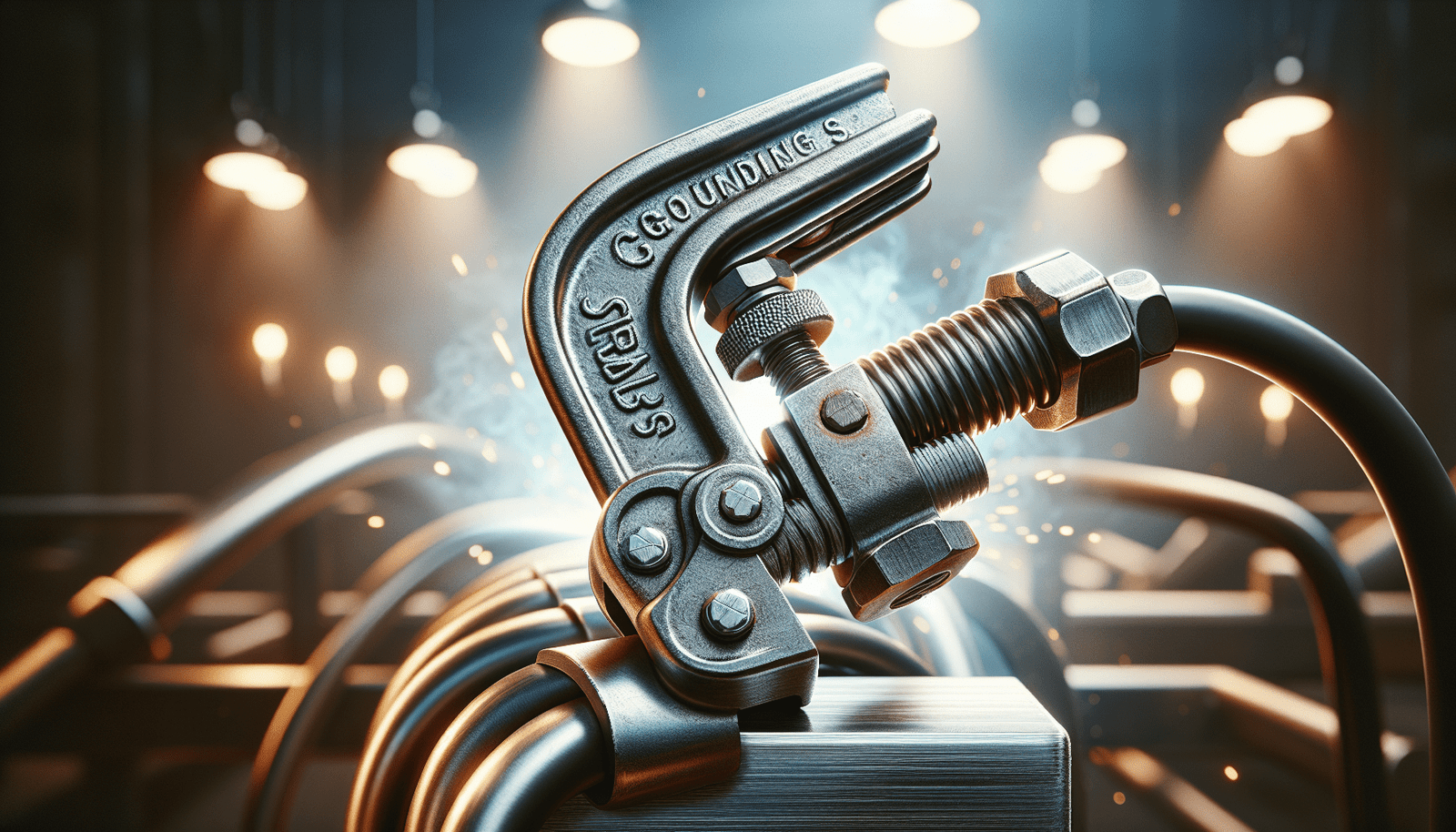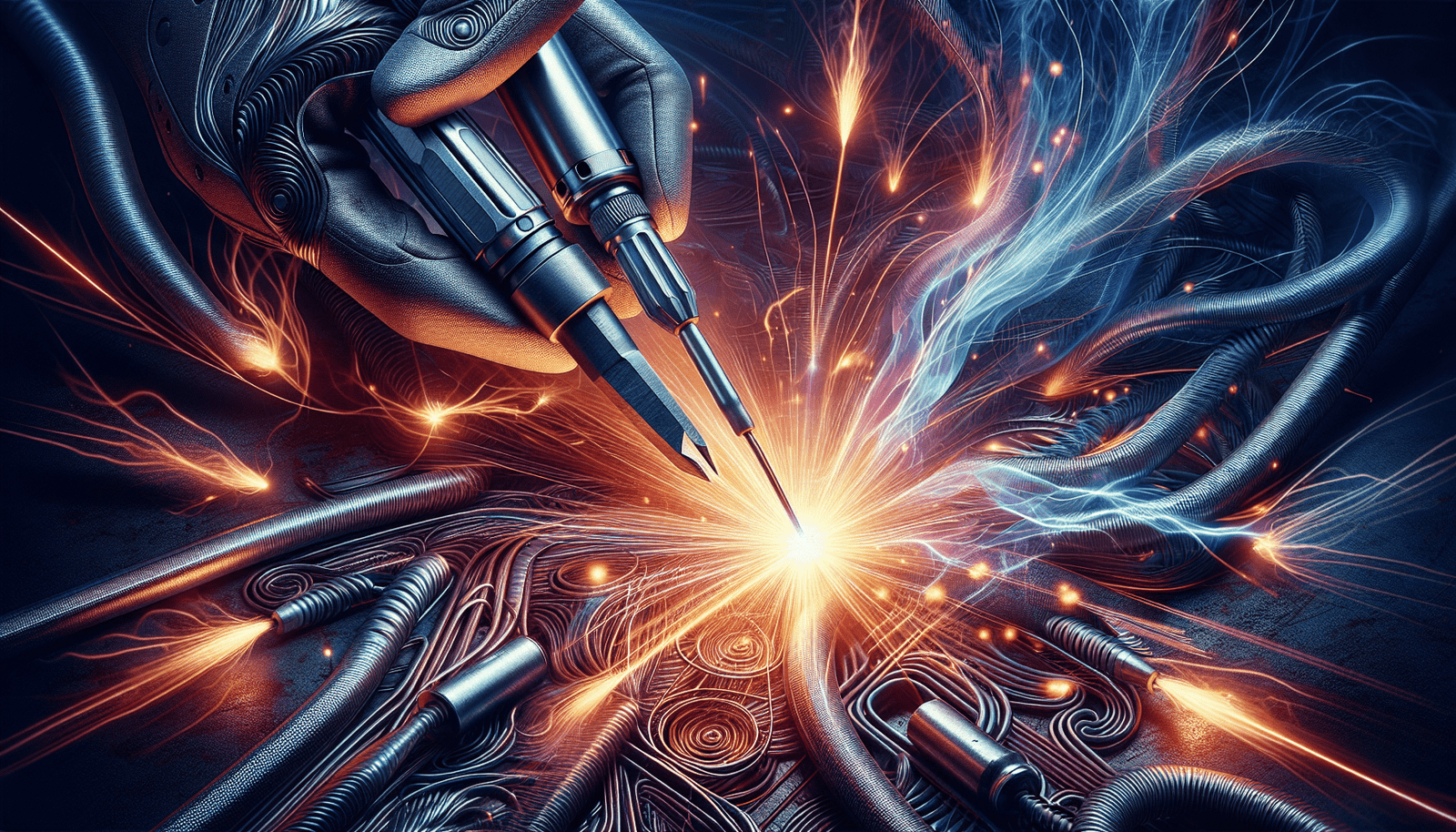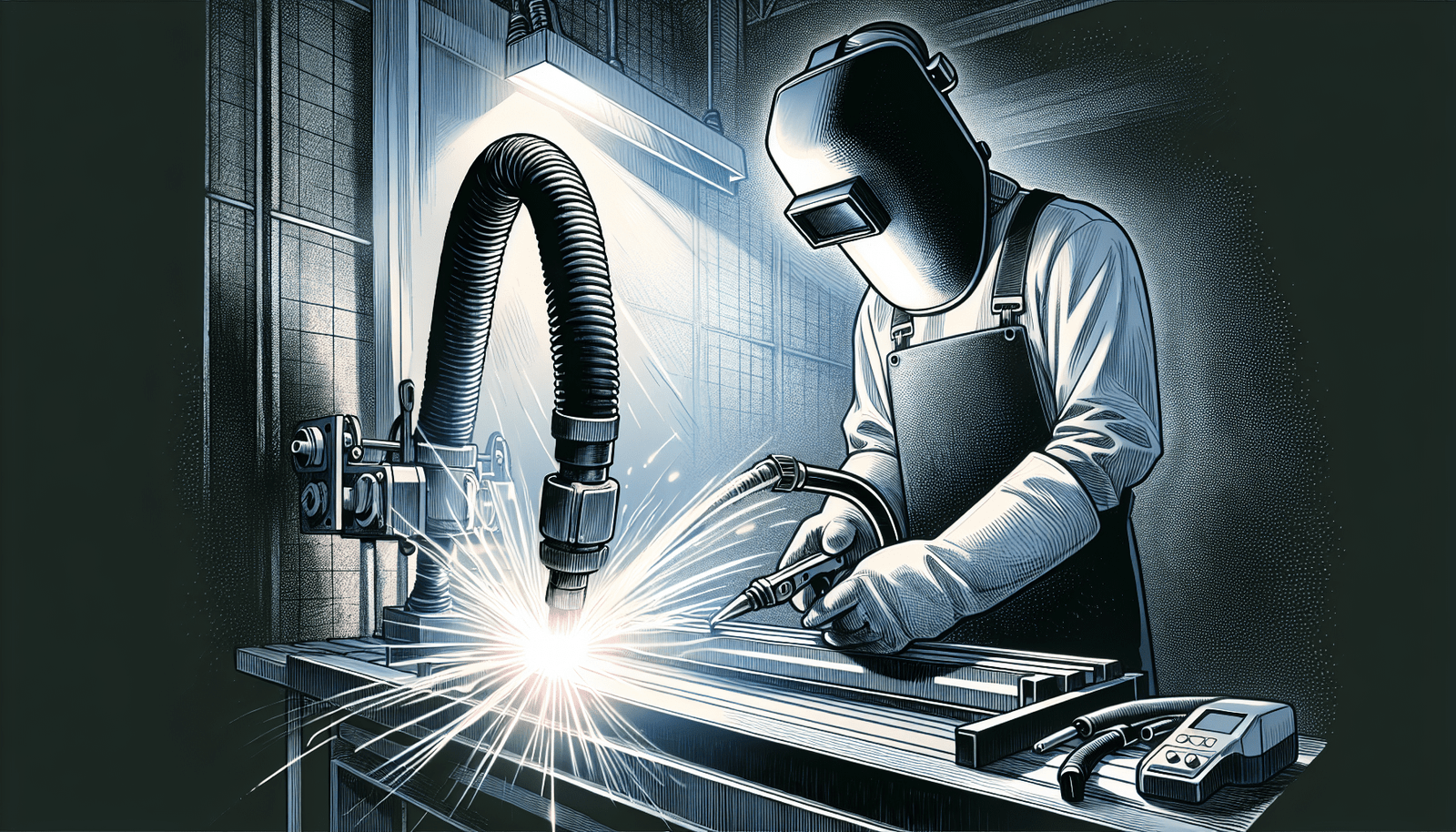If you’re looking to become a master of welding, then understanding the proper usage and maintenance of welding earth clamps is crucial. These handy tools are essential for welding projects as they create a secure connection between the workpiece and the welding machine, ensuring an efficient and safe process. In this article, we’ll provide you with some expert tips to help you get the most out of your welding earth clamps. Whether you’re a seasoned welder or just starting out, this information will help you maintain the integrity and functionality of your welding equipment, so you can tackle any project with confidence. So let’s dive in and discover the secrets to mastering welding earth clamps!
Understanding Welding Earth Clamps
Welding earth clamps are essential tools in the welding process that ensure a safe and efficient electrical connection between the workpiece and the welding machine. These clamps provide a secure grounding point, allowing the welding current to flow through the workpiece, creating a completed circuit.
Purpose and Functionality of Earth Clamps in the Welding Process
The primary purpose of welding earth clamps is to establish a reliable electrical connection between the workpiece and the welding machine. This connection is crucial as it allows the welding current to flow through the workpiece, facilitating the welding process effectively.
Earth clamps play a vital role in preventing electrical accidents by safely diverting the welding current to the ground. Without the proper grounding provided by these clamps, there is a risk of electrical shock to the welder, as well as potential damage to the welding equipment.
Types of Welding Earth Clamps
C-Clamp Grounding Clamps
C-Clamp grounding clamps are commonly used in welding applications. These clamps feature a C-shaped design, with one side acting as the clamp that securely attaches to the workpiece, while the other side connects to the welding machine’s grounding cable. C-Clamps are versatile and can accommodate various workpiece sizes and shapes.
Lincoln Electric Welders Clamps
Lincoln Electric welders clamps are renowned for their high-quality and durability. These clamps are specifically designed to provide a strong and reliable connection between the workpiece and the welding machine, ensuring optimal welding performance. Lincoln Electric clamps often feature a rugged construction and a unique design that allows for easy and precise placement.
Standard Brass Clamps
Standard brass clamps are popular among welders due to their excellent conductivity and corrosion resistance. Brass clamps provide a reliable grounding connection and are suitable for a wide range of welding applications. These clamps are known for their longevity and ability to withstand harsh working environments.
Copper Alloy Clamps
Copper alloy clamps are another common type of welding earth clamps. These clamps offer superior electrical conductivity, making them highly efficient in transmitting welding currents. Copper alloy clamps are robust and durable, ensuring a secure connection between the workpiece and the welding machine.
Correct Placement of Welding Earth Clamps
Proper placement of welding earth clamps is crucial to establish a strong and reliable electrical connection. Here are some tips for determining the best clamp location:
Clean and Prepped Surface: Ensure that the area where you plan to attach the clamp is free from rust, paint, or other contaminants. A clean surface allows for better conductivity and reduces the risk of arcing.
Proximity to the Welding Point: Ideally, the clamp should be placed as close as possible to the welding point. This minimizes electrical resistance and ensures a consistent flow of current through the workpiece.
Thick and Conductive Material: Choose a location on the workpiece where the material is both thick and conductive. Thicker material offers better grounding, while a highly conductive area allows for efficient current flow.
Avoiding Edges and Corners: It is best to avoid placing the clamp directly on edges or corners of the workpiece. These areas may not provide sufficient contact surface, resulting in weak electrical connection.
Incorrect placement of welding earth clamps can lead to various issues, including poor weld quality, increased electrical resistance, and even damage to the clamp or welding machine.
Proper Usage of Welding Earth Clamps
To ensure the effectiveness of welding earth clamps, it is important to follow proper usage guidelines. Here are some key points to consider:
Establishing a Secure Clamp Connection
When attaching the earth clamp to the workpiece, make sure it is securely fastened. A loose clamp can lead to poor conductivity and inconsistent welding performance. Tighten the clamp securely to create a solid connection.
Ensuring the Clean Connection Point
Before attaching the clamp, clean the surface where it will be attached. Removing any dirt, rust, or paint ensures optimal contact and improves electrical conductivity. A clean connection point also reduces the risk of arcing and associated welding defects.
Checking the Correct Current Flow
Verify that the welding machine’s ground cable is properly connected to the clamp. It is essential to ensure that the electrical current flows from the machine through the clamp and into the workpiece. This proper current flow guarantees an efficient welding process.
Maintaining Your Welding Earth Clamp
Regular maintenance of your welding earth clamp is important to ensure its longevity and optimal performance. Here are a few maintenance tips:
Regular Inspections for Wear and Tear
Periodically inspect the clamp for any signs of wear and tear. Look for loose connections, worn-out components, or any damage that may affect its functionality. Promptly address any issues to prevent further damage and ensure safety.
Cleaning and Treating Corrosion
Clean the clamp regularly to remove any dirt, debris, or corrosion that may accumulate on its surface. Corrosion can hinder conductivity and weaken the clamp’s performance. Use appropriate cleaning solutions and ensure the clamp is completely dry before reusing it.
Replacing Components as Needed
If you notice any damaged or worn-out components, such as the clamp jaws or screws, consider replacing them promptly. Using faulty or damaged parts can compromise the effectiveness of the clamp and pose risks during welding operations.
Potential Issues and Troubleshooting
Despite proper usage and maintenance, issues with welding earth clamps may still arise. Here are some common problems and troubleshooting steps:
Common Problems with Welding Earth Clamps
- Poor conductivity: If you experience inconsistent or weak electrical connection, it could indicate a problem with the clamp’s contact surfaces or internal components.
- Overheating: Excessive heat generated by the clamp during use may indicate a poor-quality or damaged clamp, or incorrect current flow.
- Arcing: If you notice sparks or arcing at the clamp connection point, it could be due to insufficient contact or a dirty surface.
Troubleshooting Steps
- Check for loose connections and ensure all components are properly tightened.
- Clean the clamp and workpiece surface to remove any contaminants affecting conductivity.
- Verify that the grounding cable is securely attached to the clamp and the welding machine.
- Inspect the clamp for any visible damage or signs of wear, and replace if necessary.
If troubleshooting steps do not resolve the issue or if you are unsure about proper troubleshooting techniques, it is advisable to seek professional assistance. Safety should always be a top priority when dealing with welding equipment.
Safety Measures When Using Welding Earth Clamps
As with any welding activity, safety should be of utmost importance. Here are some safety measures to consider when using welding earth clamps:
Appropriate Personal Protection Equipment
Always wear the necessary personal protection equipment (PPE) when working with welding equipment. This includes safety glasses, welding helmet, gloves, and protective clothing to safeguard against sparks, UV radiation, and other potential hazards.
Safe Handling and Operation Practices
Follow safe handling practices when working with your welding earth clamp. Avoid mishandling or dropping the clamp, as it may damage the clamp or cause injury. Additionally, follow proper welding procedures to minimize risks and ensure a safe working environment.
Avoiding Electrical Hazards
Be aware of electrical hazards associated with welding operations. Ensure that your work area is dry and free from water or moisture to prevent electrical shock. Never touch the clamp or workpiece with bare hands when the welding machine is in operation.
The Importance of High-Quality Welding Earth Clamps
Investing in high-quality welding earth clamps is crucial for achieving optimal welding outcomes. Here’s why clamp quality matters:
The Impact of Clamp Quality on Welding Outcomes
High-quality earth clamps ensure a secure and reliable electrical connection, resulting in consistent welding performance. They minimize electrical resistance, reduce the risk of welding defects, and improve overall weld quality.
Identifying High-Quality Clamps
Look for clamps made from durable and conductive materials, such as brass or copper alloys. Quality clamps often feature sturdy construction, precise alignment, and secure connection mechanisms. Major welding equipment manufacturers, like Lincoln Electric, are known for producing high-quality earth clamps.
Purchasing Reliable and Durable Earth Clamps
When purchasing welding earth clamps, prioritize reliability and durability. Choose clamps from reputable brands or suppliers known for their quality products. Investing in a reliable earth clamp ensures long-term satisfaction and reduces the likelihood of frequent replacements.
Upgrading Your Welding Earth Clamp
There may come a time when it is necessary to upgrade your welding earth clamp. Here are some factors to consider when deciding if an upgrade is needed:
When and Why to Consider Upgrading
Consider upgrading your clamp if you experience frequent issues like poor conductivity, unreliable connections, or excessive heat generation. Upgrading to a higher-quality clamp can enhance your welding experience, improve efficiency, and minimize potential problems.
Suggestions for Newer, High-Quality Clamp Models
Consult with welding experts or reputable suppliers to identify newer, high-quality clamp models that meet your specific welding requirements. Research customer reviews and seek recommendations from experienced welders to make an informed decision.
Training and Skill Development on Welding Earth Clamps Usage
Proper training and skill development are essential for utilizing welding earth clamps effectively and safely. Here’s what you need to know:
Available Training Resources
Take advantage of training resources offered by welding equipment manufacturers, welding schools, or industry organizations. These resources typically include instructional videos, workshops, and online courses that cover the basics of welding earth clamps usage.
Importance of Regular Skill Updates
Welding techniques and equipment evolve over time. Regular skill updates ensure that you stay up-to-date with the latest advancements in welding technology, including the proper usage and maintenance of welding earth clamps. Continuous learning enhances safety and efficiency in welding operations.
Role of Continuous Learning in Welding Safety and Efficiency
Continuous learning plays a crucial role in maintaining safe and efficient welding practices. By staying informed about the latest industry standards, best practices, and new technologies, you can enhance your skills and ensure optimal results in your welding projects, while maximizing the lifespan of your welding earth clamps.
In conclusion, understanding and properly using welding earth clamps is essential for a successful welding process. By following the correct placement, usage, and maintenance guidelines, and prioritizing safety measures, welders can ensure a reliable electrical connection, improve weld quality, and enhance overall welding outcomes. Continuous learning and upgrading to high-quality clamps further contribute to welding efficiency and long-term satisfaction.




